What Amazon’s Fallout show is right about how life would mutate after nuclear bombs are dropped
Amazon’s new series Fallout paints a picture of how life could mutate after nuclear bombs are dropped on the world.
The eight-part show depicts a toxic wasteland overrun by mutated species, including humans, mirroring historic nuclear disasters such as Chernobyl, Fukushima, Hiroshima and Nagasaki.
Fallout is pure science fiction; mutated animals have been found in real-life fallout zones that are similar to the show’s gigantic creatures and monstrous salamanders.
When it comes to humans, those in a real blast zone would suffer severe burns, much like the ghosts of Fallout who lost their skin when the bombs fell.
Amazon’s sci-fi series ‘Fallout’ (pictured) shows what a post-apocalyptic US would look like if it were hit by a nuclear disaster
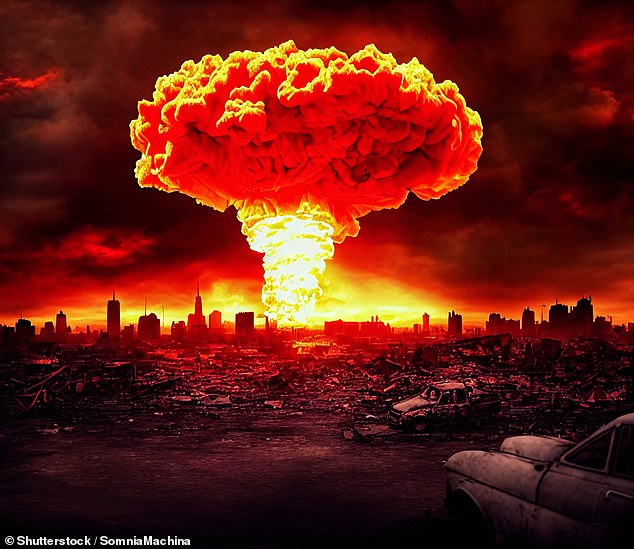
Nuclear bombs and explosions destroy everything in their wake and cause what is called a fallout, when a plume of radioactive ash and dust is released into the air that travels for miles and can last for millions of years
Scientists at Rutgers University estimate that a full-scale nuclear war would, at worst, result in the deaths of five billion people, but still leave more than three billion people on Earth.
And that seems to play a role in Fallout, which was released on April 10.
The eight-part series focuses largely on 200 years after the bombs fell in the US, with some flashbacks to just before.
Some Americans had spent time in underground bunkers called vaults, while others wondered what desert wasteland remained on the surface.
Both humans and creatures on the ground have experienced mutations as a result of the fallout, which lasts much longer than the initial nuclear explosion.
The sheer number of mutated salamanders and giant cockroaches ‘Fallout’ is not outside the realm of possibility, according to Pran Nath, a college professor of physics at Northeastern University, who said radiation can cause numerous types of abnormalities.
‘Radiation can cause mutations, which are comparable to spontaneous mutation, in animals and humans’, Nath told Northeast Global News (NGN)and adds: ‘In Chernobyl, for example, they discover animals that have mutated.’

The sheer number of mutated salamanders and giant cockroaches ‘Fallout’ is not outside the realm of possibility, according to Pran Nath, a college professor of physics at Northeastern University, who said radiation can cause numerous types of abnormalities.
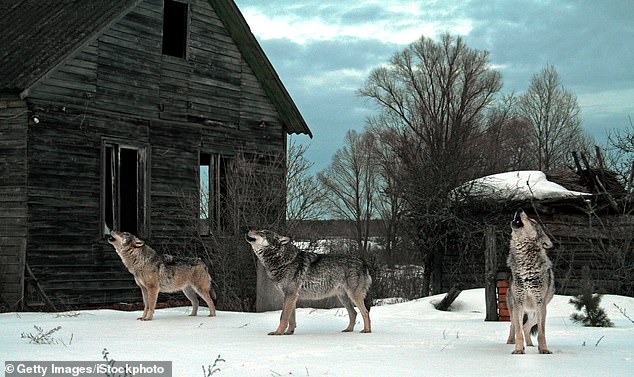
Wolves developed mutated genes from Chernobyl’s high radiation levels, making them resistant to cancer
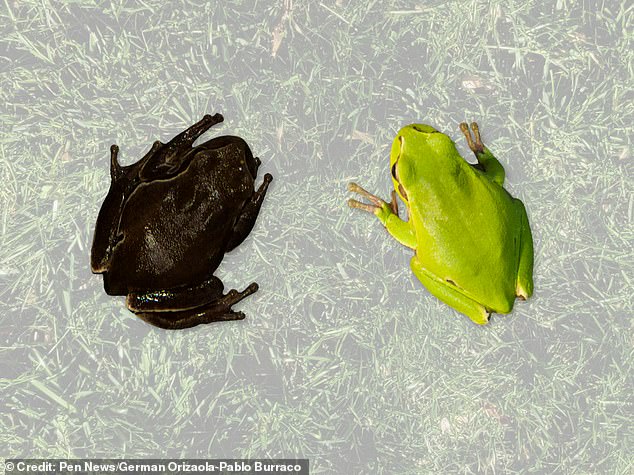
Tree frogs typically have green pigmentation, but researchers found that the species in the CEZ was genetically altered to be dark or black
Since the Chernobyl nuclear explosion in 1986, scientists have discovered black-colored tree frogs that typically have green pigmentation and a rare genetic mutation in wolves that could have cancer-curing properties.
Color changes in animals are another possible mutation, although they will not glow as cartoons illustrate, but will instead adopt duller plumage in the case of birds.
However, plants tend to absorb the lion’s share of the radioactive material by absorbing it into the soil, causing the leaves to change shape and the trees to turn from dark green to rust color.
“If you’re an organism living in one of these highly radioactive areas, it’s not a great place to be,” said Prof. Timothy Mousseau, a biology scientist at the University of South Carolina. BBC Science Focus.
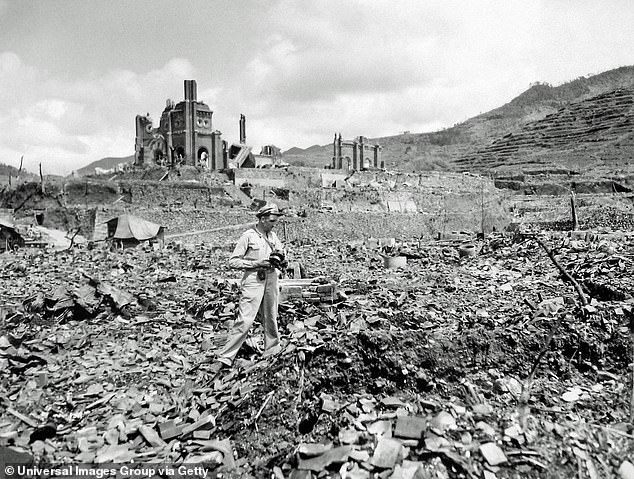
Hiroshima was razed to the ground after the US dropped an atomic bomb in 1945 (photo). People who survived the blast were born with a genetic defect called microcephaly that caused them to have a smaller head
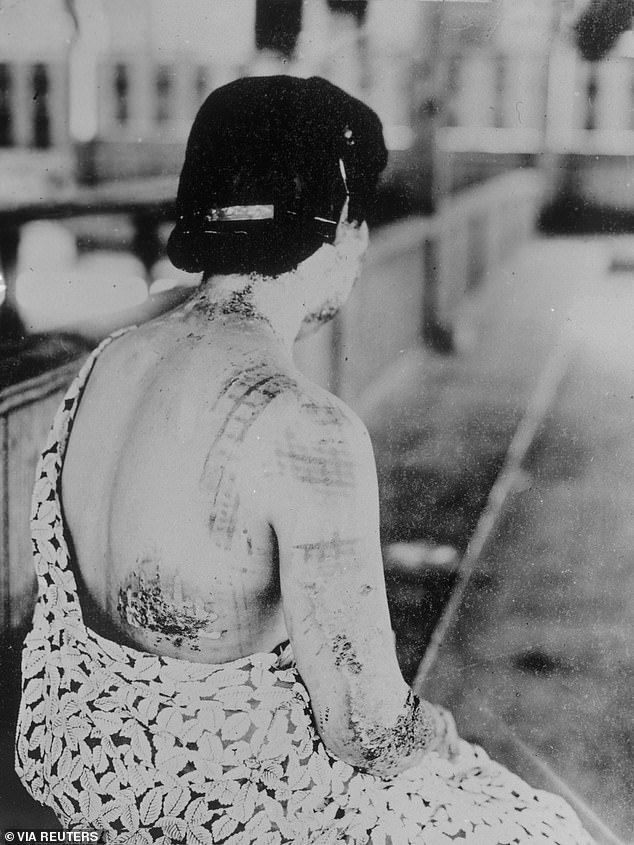
People who were partially protected from the Nagasaki nuclear explosion (pictured) were still affected by the blast, as their bodies heated up to 122 degrees Fahrenheit, causing severe burns — much like the burned skin of the ghosts in “Fallout.”
Nuclear explosions affect the environment in three phases, starting with the impact zone – where the explosion occurs – which emits gamma rays, also called gamma rays, which burn up everything in its wake.
“When the nuclear explosion takes place, a lot of energy and radiation is emitted in a very short time due to the chain reaction,” Nath told NGN.
“When you’re exposed to it, for example, the people in Hiroshima actually vaporized, leaving shadows behind.”
People partially protected from the blast will still be affected as their bodies heat up to 122 degrees Fahrenheit, causing severe burns — much like the burned skin of the ghosts in “Fallout.”
Ghouls are mutated humans transformed into wild monsters as a result of exposure to severe radiation.
The second stage of the nuclear detonation is called a ‘fireball’, just like the first shockwave scene in the science fiction show, but it would travel much faster than in the cinematic portrayal, extending outwards at the speed of sound, about 1200 kilometers per second. o’clock.
Everything within the blast area is destroyed: people, buildings and wildlife are all destroyed, but the radioactivity that occurs during the fallout can last from just a few seconds to millions of years.
“A nuclear explosion produces up to a hundred different radioactive elements,” Nath told NGN.
“…It causes pollution and damage to the body and injuries over a long period of time, causing cancer and leukemia, and these kinds of things,” he added.
But in places like Fukushima, the site of the 1945 atomic bomb, some people were born with microcephaly, in which radiation damages an embryo so that it develops a smaller head.
An estimated 146,000 people were killed in Hiroshima and another 80,000 died in Nagasaki as a direct result of the atomic bombs dropped by the US.
“We live in an increasingly radioactive world,” Mousseau told BBC Science Focus.
“So everything we can learn from places like Chernobyl, Fukushima and atomic bomb test sites will ultimately be relevant to humans.”
